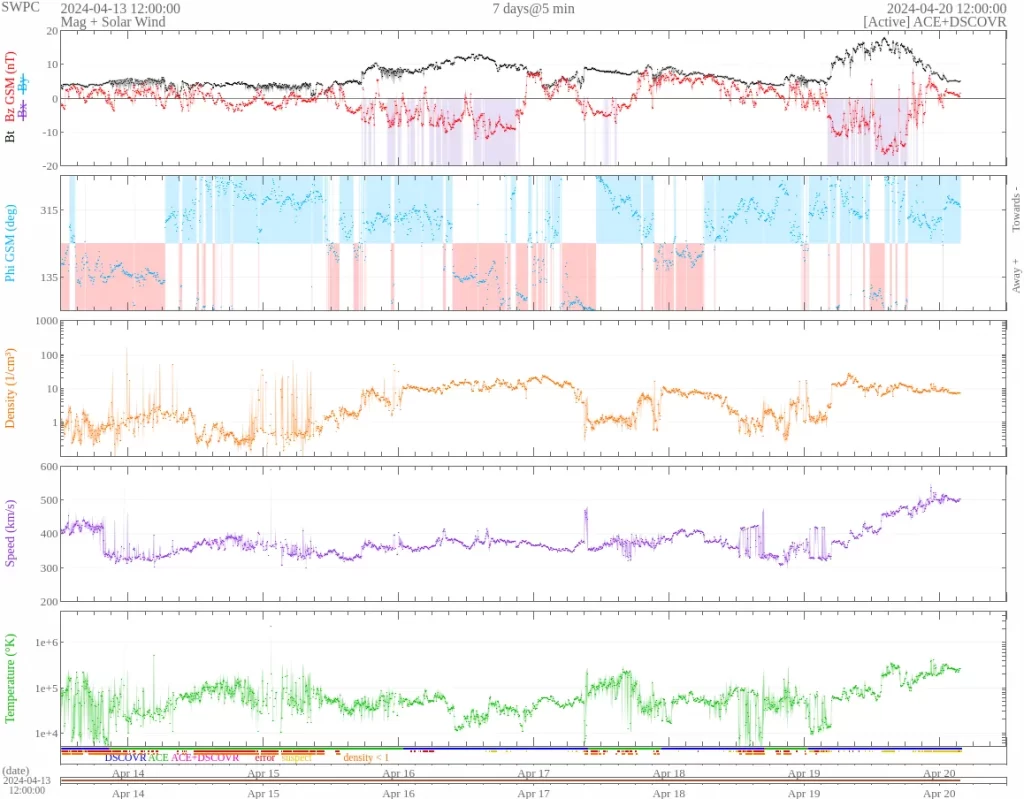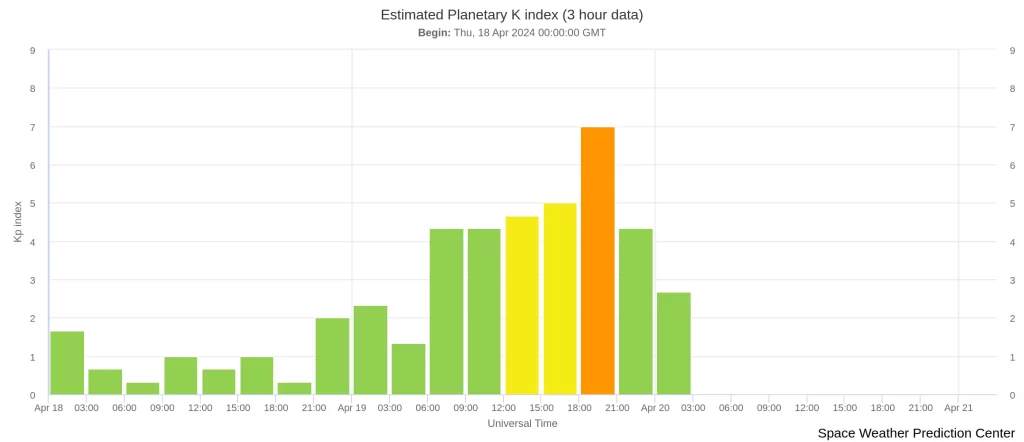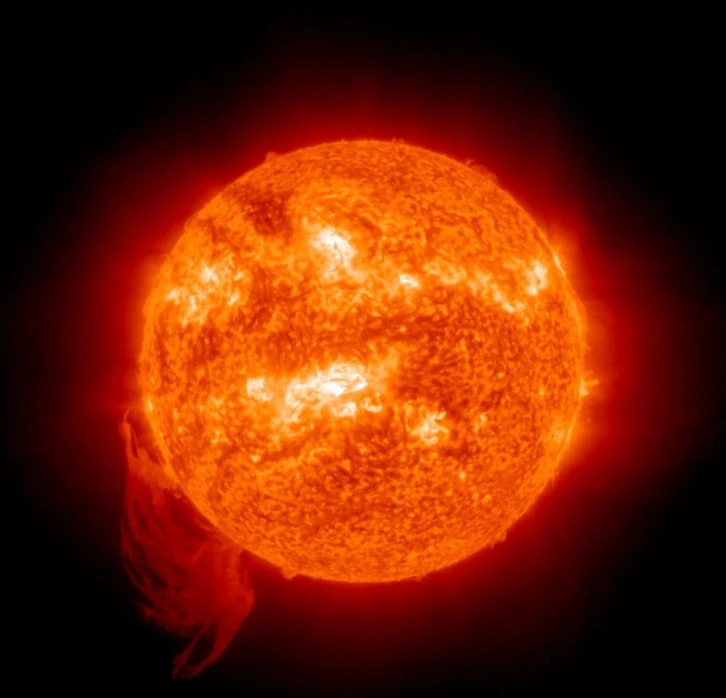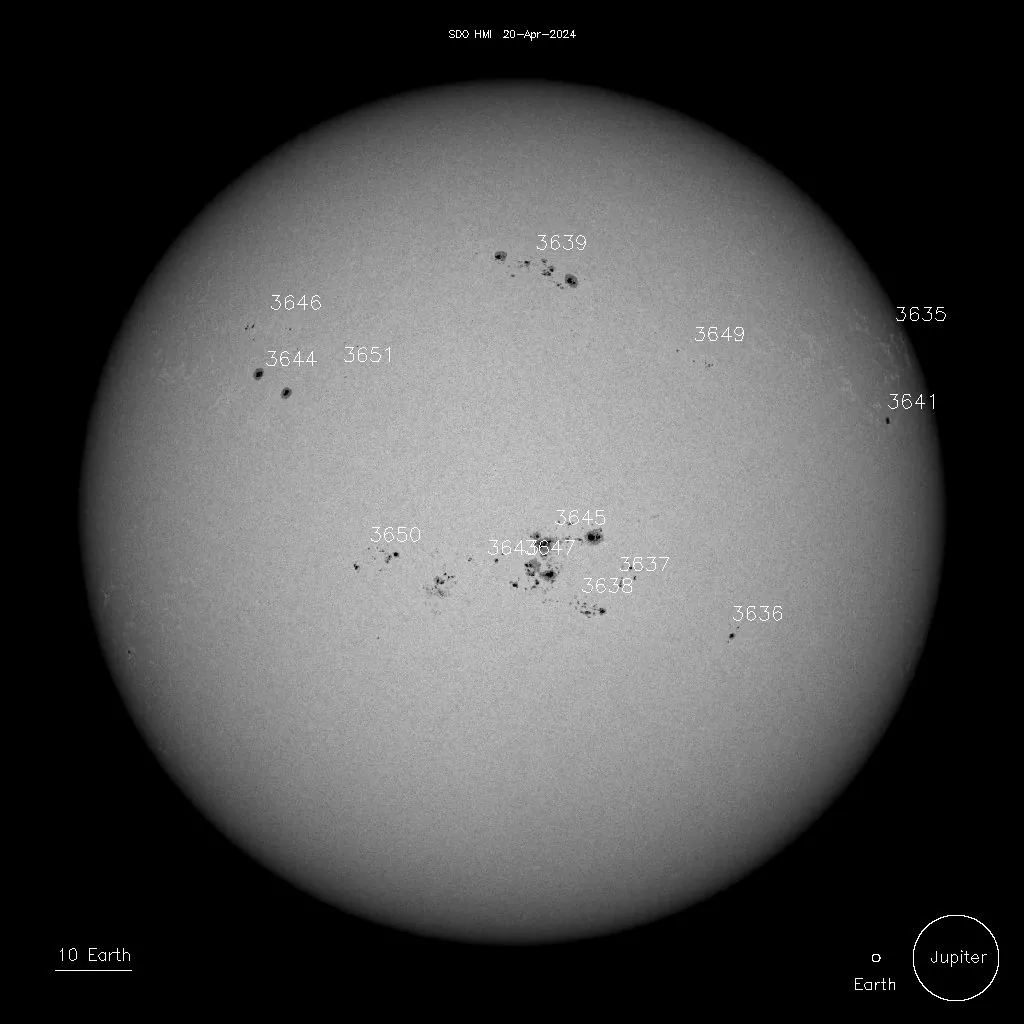Solar wind conditions became enhanced beginning at 04:13 UTC on April 19, 2024, due to coronal mass ejection (CME) impact, resulting in unexpected G3 – Strong geomagnetic storming just before 20:00 UTC.
Following the CME arrival, total field strength reached 18 nT and the Bz component was sustained southward after 04:10 UTC with a peak of -17 nT observed, according to the SWPC.
Geomagnetic K-index of 4 threshold was reached at 07:50 UTC, followed by K-index of 5 (G1 – Minor geomagnetic storm) at 14:15 UTC. Geomagnetic K-index of 6 threshold (G2 – Moderate geomagnetic storm) was reached at 19:40 UTC, followed by K-index of 7 (G3 – Strong geomagnetic storm) threshold at 19:52 UTC.
Under G3 – Strong geomagnetic storm conditions (impact is primarily poleward of 50 degrees Geomagnetic Latitude), power system voltage irregularities are possible, and false alarms may be triggered on some protection devices. Spacecraft systems may experience surface charging; increased drag on low Earth-orbit satellites and orientation problems may occur. Intermittent satellite navigation (GPS) problems are likely, including loss-of-lock and increased range error. HF (high frequency) radio may be intermittent and aurora may be seen as low as Pennsylvania to Iowa to Oregon.



While the strong storm was brief, it managed to produce impactful auroras, including red auroras as far south as Iowa and Missouri. Northern lights were also sighted across Europe, with reports coming in from Bled, Slovenia, and even Corsica in the Mediterranean Sea. Additionally, red aurora was also seen and captured from Tasmania.
Surreal red #Auroraborealis visible to the naked eye this morning in Iowa. Unforgettable experience.
Cedar Falls, Iowa
April 19, 2024, 04:38 – 05:03 CDT@TamithaSkov @Vincent_Ledvina @theauroraguy @StrmchsrHunterF @landon_wx
*enhanced quality#aurora #northernlights #iawx pic.twitter.com/5MPlBpOl8H— Igor Arkadiev (@Arkadiev) April 19, 2024
The aurora drought finally ended this morning! Incredible colors from Watertown, South Dakota!
Shoutout to @StrmchsrHunterF for telling me to run out to the field at work as this substorm exploded. Wish I had my digital camera with me!#sdwx #aurora pic.twitter.com/36Jr0RJjv2
— Alex Resel (@aresel_) April 19, 2024
Aurora in Bled, Slovenia right now! #aurora #Auroraborealis pic.twitter.com/Gi0HFpgD9g
— Simon Zupan (@ZupanPhoto) April 19, 2024
The best seat in the house #aurora #northernlights #balbriggan #dublin #ireland pic.twitter.com/lZELlhIJHf
— Sryan Bruen Photography (@sryanbruenphoto) April 19, 2024
Solar activity reached moderate levels in 24 hours to 00:30 UTC on April 20. Region 3647 produced two M-class flares, the largest of which was an M2.1 flare at 04:53 UTC on April 19. The second was M1.0 at 13:06 UTC.
Other notable activity included a large prominence eruption on the SE limb, beginning at around 04:00 UTC on April 19. The associated CME is not Earth-directed.


Solar activity is expected to remain at moderate levels through April 21, with M-class flares expected (75%) and a slight chance for X-class flares (20%), due to the flare potential of several active regions on the visible disk.


3635 – Beta
3636 – Beta
3637 – Alpha
3638 – Beta
3639 – Beta-Gamma
3641 – Alpha
3643 – Beta
3644 – Beta
3645 – Beta
3646 – Beta
3647 – Beta-Delta
3649 – Beta
3650 – Beta
3651 – Beta
Periods of unsettled to active levels are expected on April 20 and 21 due to continued CME activity, coupled with the onset of negative polarity coronal hole high speed stream (CH HSS) influences and the anticipated arrival of multiple CMEs from April 16 to 18.
Quiet to unsettled conditions are expected on April 22 due to negative polarity CH HSS influence.
References:
1 Forecast Discussion – Issued: 2024 Apr 20 0030 UTC – Prepared by the U.S. Dept. of Commerce, NOAA, Space Weather Prediction Center
Featured image credit: MissouriSkies (stillshot)
Enhanced Risk of Severe Weather (level 3/5) for portions of southern Iowa, northeastern Missouri, and far western Illinois
Tuesday, April 16, 2024
Long-duration M9.4 solar flare erupts from Region 3615
Sunday, March 31, 2024
Strong X1.1 solar flare erupts from AR 3615
Thursday, March 28, 2024
Major, long-duration X1.1 solar flare produces Earth-directed CME
Saturday, March 23, 2024
Filament eruption produces Earth-directed CMEs
Monday, March 18, 2024
Strong solar flare erupts from the SE limb, signaling increased solar activity in the days ahead
Saturday, March 16, 2024
CME impact sparks G2 – Moderate geomagnetic storm
Monday, March 4, 2024

